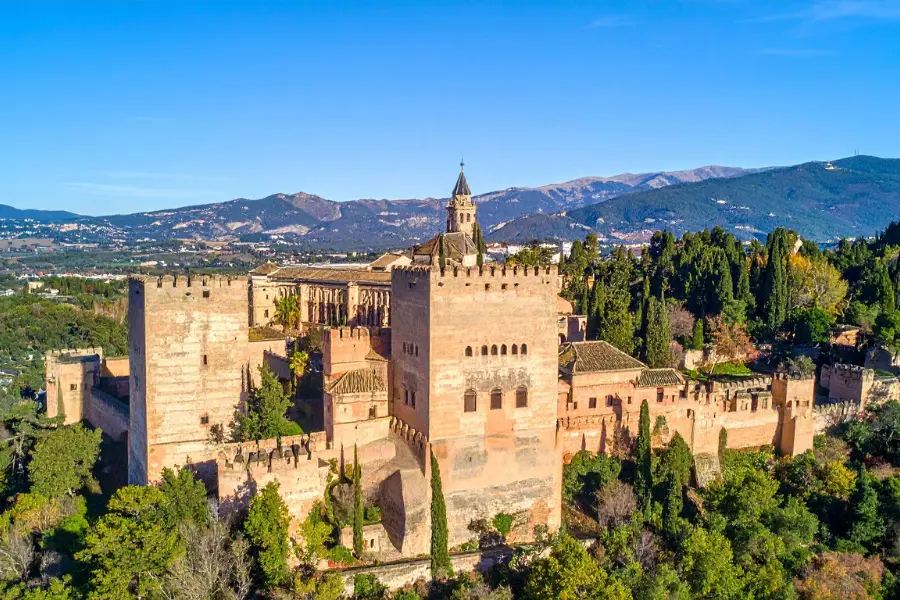Top 10 Granada Monuments Every Traveler Must See
Granada, Spain, is a city where history breathes through its streets. Nestled at the foot of the Sierra Nevada mountains in Andalucía, it’s a place where Moorish artistry, Christian grandeur, and Roma person culture converge. The city’s skyline is crowned by majestic palaces, cathedrals, and ancient fortresses that speak of empires, spirituality, and creativity.
This guide explores the top Granada monuments that every traveler should see — from the iconic Alhambra to the hidden gems tucked away in the Albaicín.
1. The Alhambra – The Crown Jewel of Granada Monuments
No list of Granada monuments can begin without The Alhambra. This 13th-century palace-fortress, built during the Nasrid Dynasty, is the ultimate symbol of Islamic architecture in Spain. With its intricate stucco work, tranquil courtyards, and poetic inscriptions, the Alhambra embodies the pinnacle of Moorish artistry.
The Nasrid Palaces — especially the Court of the Lions and Hall of the Ambassadors — showcase a level of elegance unmatched in medieval Europe. Beyond the palaces, the Generalife Gardens bloom with fountains, cypress trees, and floral pathways, offering a peaceful escape that mirrors paradise itself.
Travel Tip: Reserve tickets weeks in advance. The Alhambra is Spain’s most visited monument, and entry slots sell out fast!
2. Granada Cathedral – A Masterpiece of Renaissance Art
The Cathedral of Granada rises majestically at the heart of the city, representing the triumph of Christian architecture after the Reconquista in 1492. Built over a former mosque, it perfectly illustrates the cultural layering of Granada’s historic monuments.
Inside, visitors are greeted with gilded altars, grand domes, and detailed sculptures that narrate the Catholic Monarchs’ victory. The cathedral’s vast interiors and impressive pipe organ make it a must-see for lovers of art and history alike.
Highlight: Attend a choral performance to experience the cathedral’s incredible acoustics.
3. Royal Chapel of Granada (Capilla Real) – Where Royalty Rests
Next to the cathedral lies the Royal Chapel, the final resting place of Queen Isabella I and King Ferdinand II — the monarchs who unified Spain. Their white marble tombs, crafted by Italian sculptor Domenico Fancelli, symbolize Spain’s transition from medieval faith to Renaissance humanism.
The adjoining museum displays relics like Isabella’s crown and scepter, along with intimate letters and artifacts that provide a human touch to Spain’s royal history.
Read also: Best Places to Visit in Durban
4. El Bañuelo – Traces of Islamic Granada
For those fascinated by Moorish life, El Bañuelo is one of the oldest surviving Granada monuments. Dating back to the 11th century, these Arab baths once served as a communal hub for wellness and conversation.
The hammam’s horseshoe arches and star-shaped skylights create a mystical ambiance that still feels sacred. Remarkably, El Bañuelo escaped destruction during the Christian Reconquista, making it one of Spain’s best-preserved Islamic baths.
Travel Tip: Visit it after a stroll along the Carrera del Darro, Granada’s most scenic riverside walk.
5. Cartuja Monastery – The Baroque Wonder of Granada
The Monasterio de la Cartuja might look plain from outside, but step in and you’ll witness one of Spain’s most extravagant Baroque interiors. Once home to Carthusian monks, the monastery’s sacristy is considered a national treasure, adorned with swirling carvings, mirrored surfaces, and ornate frescoes.
This site stands as a testament to the spiritual and artistic splendor of post-Reconquista Granada.
6. Corral del Carbón – A Glimpse of Granada’s Trading Past
Built in the 14th century under Sultan Yusuf I, Corral del Carbón is the oldest Nasrid building in Granada. Once an inn and warehouse for silk traders, it now serves as an open-air cultural venue.
Its iconic horseshoe arch entrance and central courtyard recall the city’s role as a major trading center in the Islamic world. For photography enthusiasts, this is one of the most picturesque Granada monuments.
7. Monastery of San Jerónimo – The City’s First Christian Monastery
Constructed in the early 1500s, the Monastery of San Jerónimo was one of Granada’s first Christian structures after the fall of the Nasrids. The combination of Gothic, Renaissance, and early Baroque elements gives the building a unique identity.
Inside, the peaceful cloisters and the magnificent altarpiece dedicated to El Gran Capitán, a legendary Spanish general, make it a site of reflection and reverence.
8. The Madraza – Granada’s First Arab University
The Madraza of Granada, founded in 1349, was once the city’s center of higher learning. This university produced scholars in science, mathematics, and philosophy during the height of Islamic rule.
Its Hall of the Lords retains stunning plasterwork typical of Nasrid design, while exhibitions inside highlight Granada’s intellectual and cultural contributions to the Islamic Golden Age.
9. Sacromonte Abbey – Faith and Flamenco Over the Hills
The Abadía del Sacromonte overlooks Granada from its namesake hillside, blending spirituality with Andalusian folklore. The abbey’s catacombs, believed to hold the relics of Saint Cecilio (Granada’s patron saint), are open to visitors.
Nearby, the Sacromonte caves are famous as the birthplace of flamenco’s zambra dance — an emotional expression of Roma person heritage that defines Granada’s soul.
Local Tip: Sunset visits offer breathtaking views of the Alhambra glowing against the evening sky.
10. Casa de Zafra – A Window to Moorish Home Life
Hidden in the Albaicín district, Casa de Zafra is a beautifully preserved 14th-century Nasrid house. With its traditional courtyard, fountains, and tiled walls, it provides insight into domestic life during Islamic rule.
Today, the house functions as a museum and cultural center, showcasing how daily life intertwined with art and architecture in ancient Granada.
FAQs
The most famous Granada monuments include the Alhambra, Generalife Gardens, Granada Cathedral, Royal Chapel of Granada, and El Bañuelo. These landmarks highlight the city’s Islamic heritage, Renaissance artistry, and Catholic grandeur.
The Alhambra is the crown jewel of Granada monuments because it perfectly represents the splendor of Moorish architecture. Built in the 13th century, it features intricate carvings, peaceful courtyards, and panoramic views that symbolize the artistic peak of Al-Andalus civilization.
Granada has two UNESCO World Heritage Sites — the Alhambra and Generalife complex and the Albaicín district. Both sites preserve the essence of Islamic architecture and the city’s cultural fusion through centuries.
Must visit: Best Hiking Trails and Scenic Spots in Boulder, Colorado

